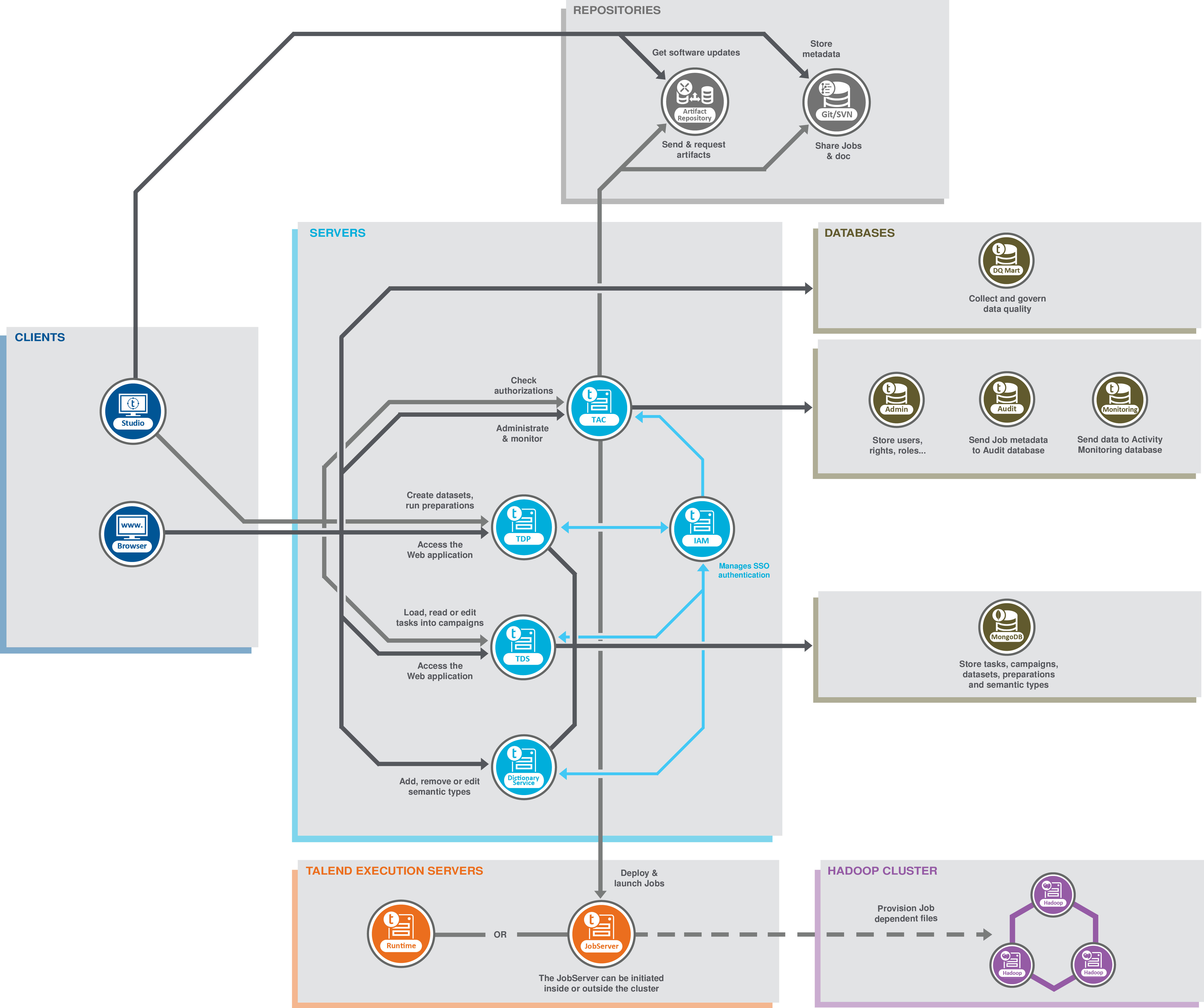Talend Big Data Platform architecture
Each of the operating principles can be isolated in different functional blocks. The following diagram describes the different types of blocks and their interoperability:

Did this page help you?
If you find any issues with this page or its content – a typo, a missing step, or a technical error – let us know how we can improve!
